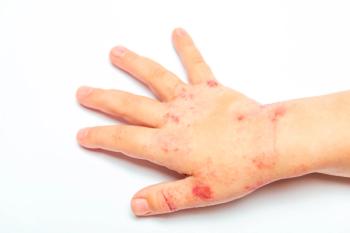
Comparing pediatric and adult hidradenitis suppurativa patients
Many conditions are different in the pediatric population than in the adult population. How does hidradenitis suppurativa differ between the 2 groups?
Roughly 50% of patients who likely have hidradenitis suppurativa start between 10 and 21 years of age. Little research has been done into how teenagers with the condition use health care in the lead up to a diagnosis and how they differ from adult patients with hidradenitis suppurativa. An investigation in JAMA Dermatology delivers much-needed information.1
The investigators ran a retrospective cohort study that used the MarketScan medical claims database to identify pediatric and adult patients who had hidradenitis suppurativa claims between January 2012 and December 2016. Health care utilizations that were examined included outpatient care by discipline, emergency/urgent care claims, inpatient claims, and concurrent diagnoses.
There were a total of 8727 patients included in the study: 1094 pediatric patients with an average age of 14.3 years and 7633 adult patients, with an average age of 37.2 years. Both subcohorts were heavily female. In the quest for a diagnosis, the pediatric patients were likely to see a variety of clinicians including dermatologists, family physicians, emergency department staff, and pediatricians who would give initial diagnoses of comedones and folliculitis. In addition, these patients had a high rate of general medical conditions as well as comorbid skin conditions such as acne vulgaris (558 [51.0%]), acne conglobata (503 [45.9%]), obesity (369 [33.7%]), and anxiety disorders (367 [33.6%]). Pediatric patients were also more likely to have hidradenitis suppurativa-specific claims for emergency and urgent care physicians than the adult patients (35.6% vs 28.2%; P < .001; and 18.1% vs 13.4%; P < .001; respectively). The average cost per emergency claim was similar between both groups ($413.27 vs $682.54; P = .18). Over 5 years the largest part of disease-specific cost was inpatient visits in both groups.
The investigators concluded that in spite of hidradenitis suppurativa often being treated in an outpatient setting, pediatric patients often use high-cost care options. They urge clinicians to improve recognition of hidradenitis suppurativa in pediatric patients to lessen those costs.
Reference
1. Hallock K, Mizerak M, Dempsey A, Maczuga S, Kirby J. Differences between children and adults with hidradenitis suppurativa. JAMA Dermatol. August 11, 2021. Epub ahead of print. doi:10.1001/jamadermatol.2021.2865
Newsletter
Access practical, evidence-based guidance to support better care for our youngest patients. Join our email list for the latest clinical updates.








